我们帮大家精选了相关的编程文章,网友符沛岚根据主题投稿了本篇教程内容,涉及到mysate中stat命令、stat命令、mysate中stat命令相关内容,已被458网友关注,内容中涉及的知识点可以在下方直接下载获取。
mysate中stat命令
一、stat(1)
- stat作用:用来显示文件的详细信息,包括inode, atime, mtime, ctime
- stat格式:stat [OPTION]…FILE…
- stat命令格式:
- -L:显示符号链接
- -f:显示文件所在的文件系统信息
- -t:以简洁的方式输出摘要信息
- stat输出内容:
- File:显示文件名
- Size:显示文件大小
- Blocks:文件使用的数据块总数
- IO Block:IO块大小
- regular file:文件类型(常规文件)
- Device:设备编号
- Inode:Inode号
- Links:链接数
- Access:文件的权限
- Gid、Uid:文件所有权的Gid和Uid
- 学习截图
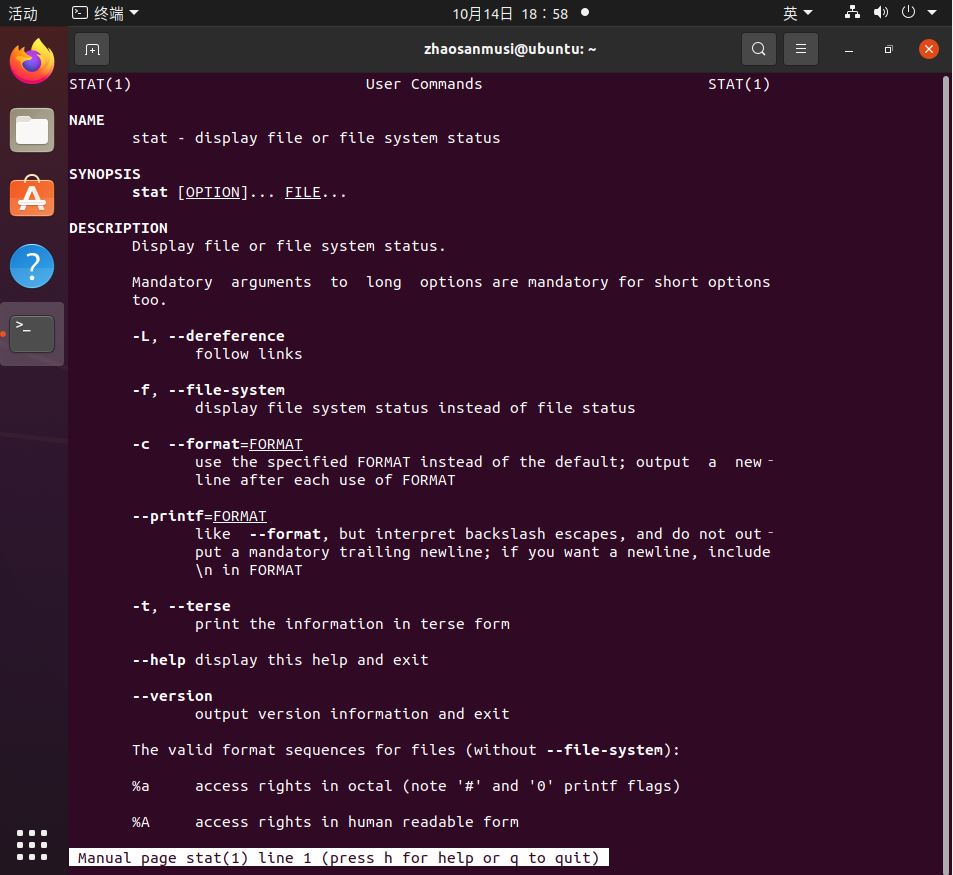
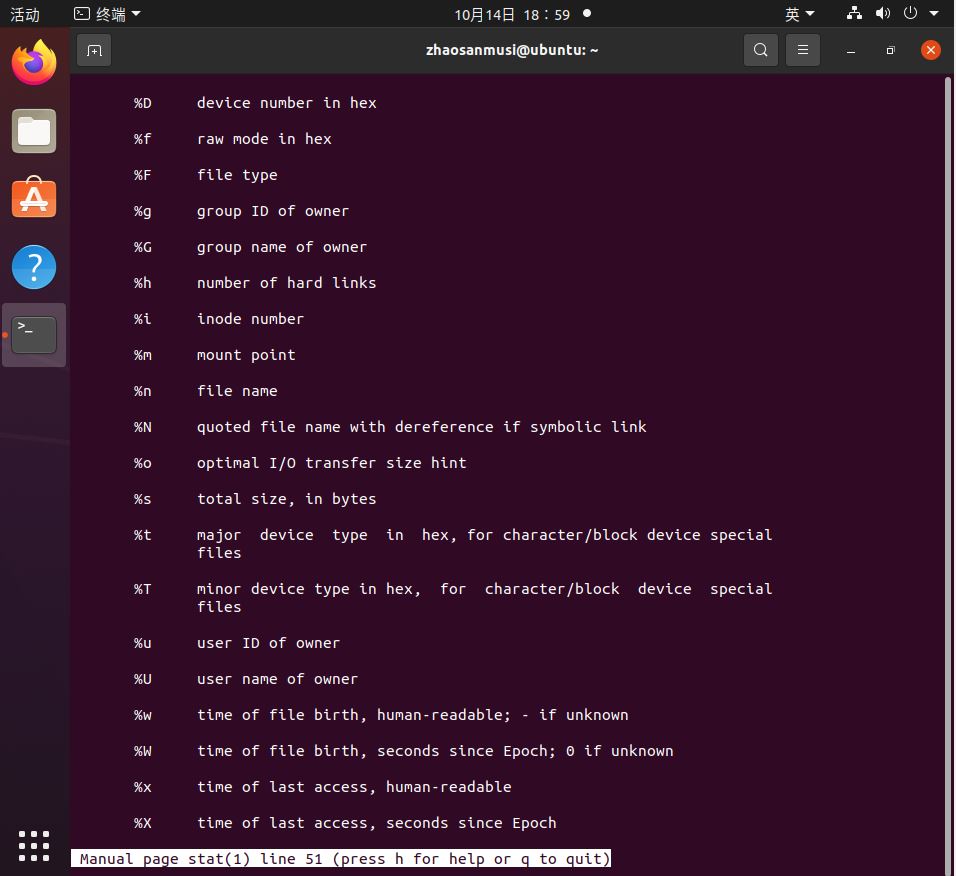
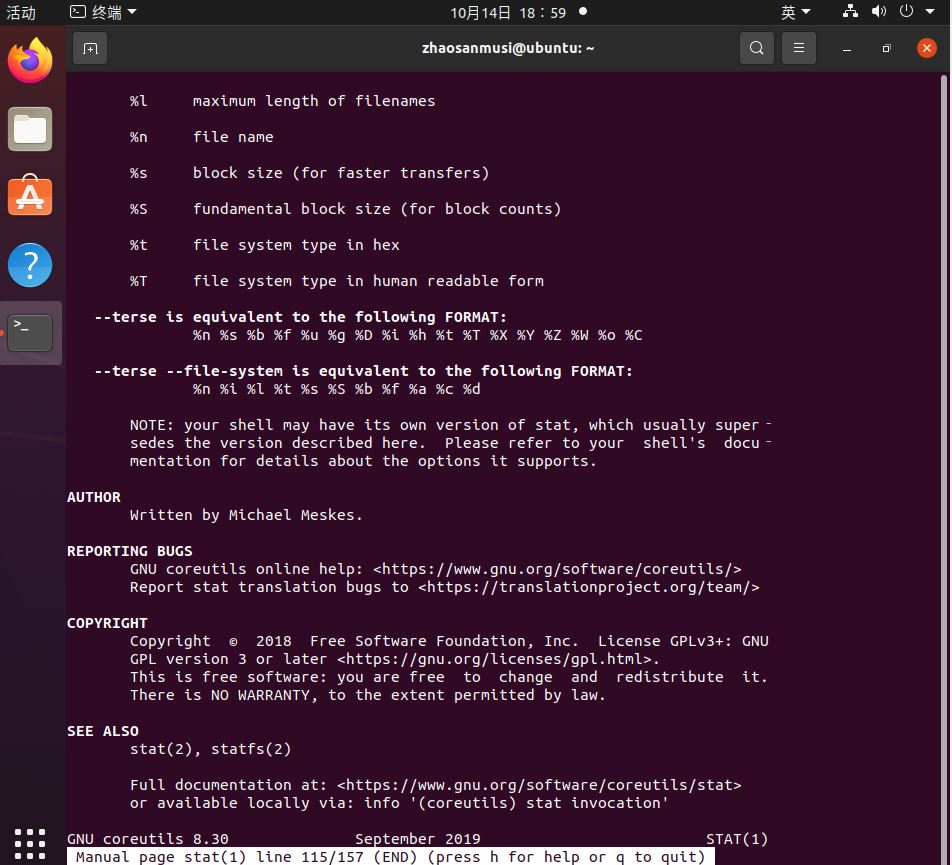
二、man -k ,grep -r的使用
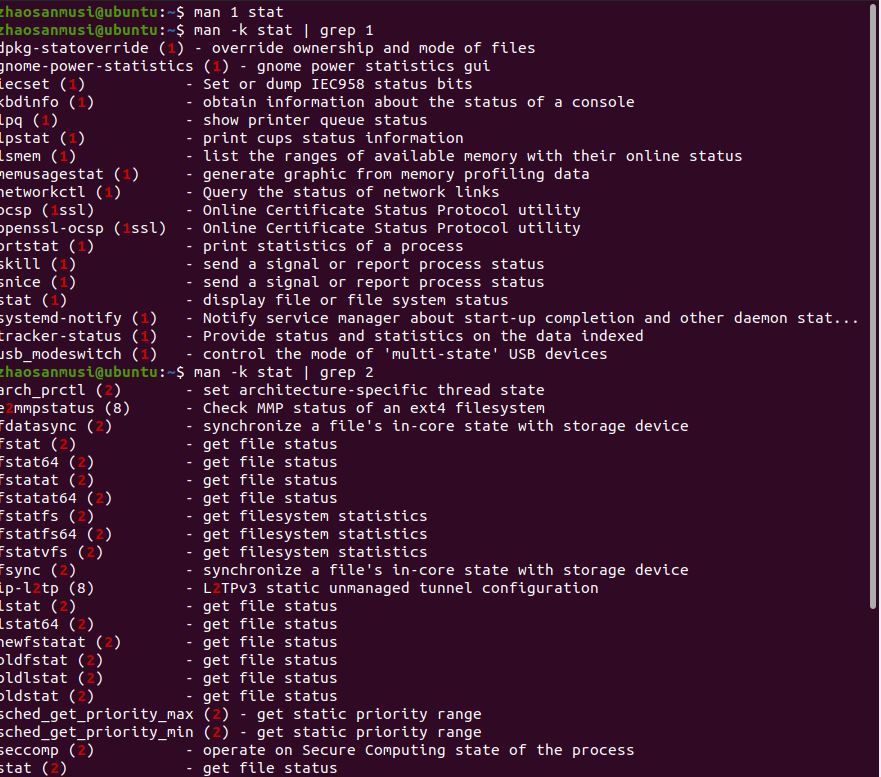
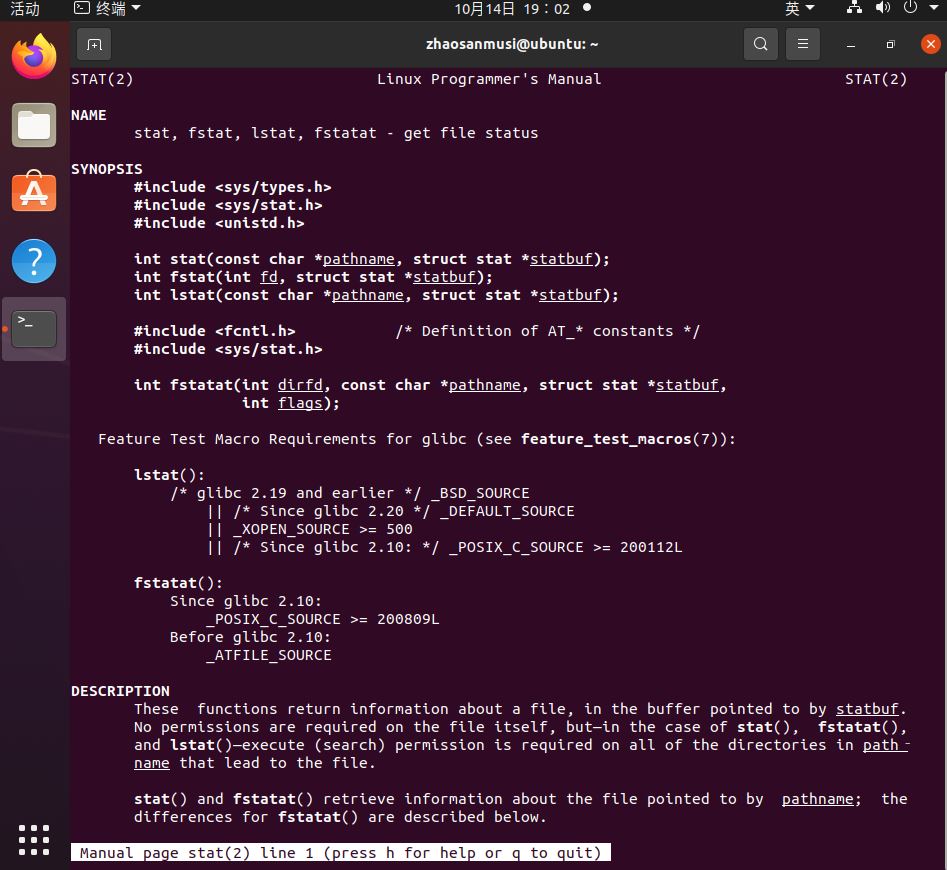
三、伪代码
声明结构体
读入命令行文件路径
调用stat()函数给结构体赋值
逐个打印结构体中的数据
四、产品代码 mystate.c的码云链接
#include#include #include #include #include int main(int argc, char *argv[]) { struct stat sb; if (argc != 2) { fprintf(stderr, "Usage: %s \n", argv[0]); exit(EXIT_FAILURE); } if (stat(argv[1], &sb) == -1) { perror("stat"); exit(EXIT_FAILURE); } printf("File type: "); switch (sb.st_mode & S_IFMT) { case S_IFBLK: printf("block device\n"); break; case S_IFCHR: printf("character device\n"); break; case S_IFDIR: printf("directory\n"); break; case S_IFIFO: printf("FIFO/pipe\n"); break; case S_IFLNK: printf("symlink\n"); break; case S_IFREG: printf("regular file\n"); break; case S_IFSOCK: printf("socket\n"); break; default: printf("unknown?\n"); break; } printf("I-node number: %ld\n", (long) sb.st_ino); printf("Mode: %lo (octal)\n",(unsigned long) sb.st_mode); printf("Link count: %ld\n", (long) sb.st_nlink); printf("Ownership: UID=%ld GID=%ld\n",(long) sb.st_uid, (long) sb.st_gid); printf("Preferred I/O block size: %ld bytes\n",(long) sb.st_blksize); printf("File size: %lld bytes\n",(long long) sb.st_size); printf("Blocks allocated: %lld\n",(long long) sb.st_blocks); printf("Last status change: %s", ctime(&sb.st_ctime)); printf("Last file access: %s", ctime(&sb.st_atime)); printf("Last file modification: %s", ctime(&sb.st_mtime)); exit(EXIT_SUCCESS); }
五、测试代码,mystat 与stat(1)对比
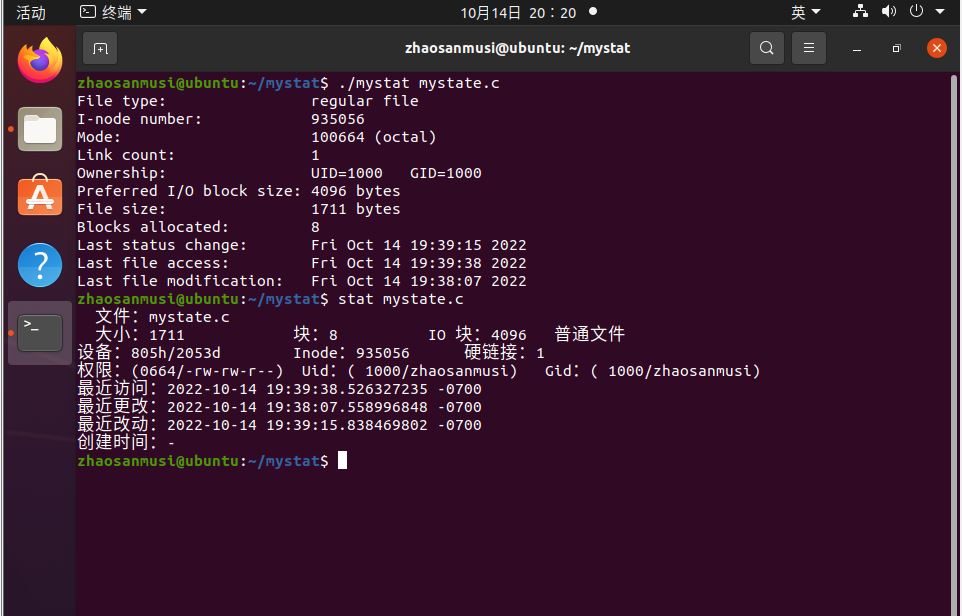
到此这篇关于mysate中stat命令的实现方法的文章就介绍到这了,更多相关mysate中stat命令内容请搜索码农之家以前的文章或继续浏览下面的相关文章希望大家以后多多支持码农之家!










